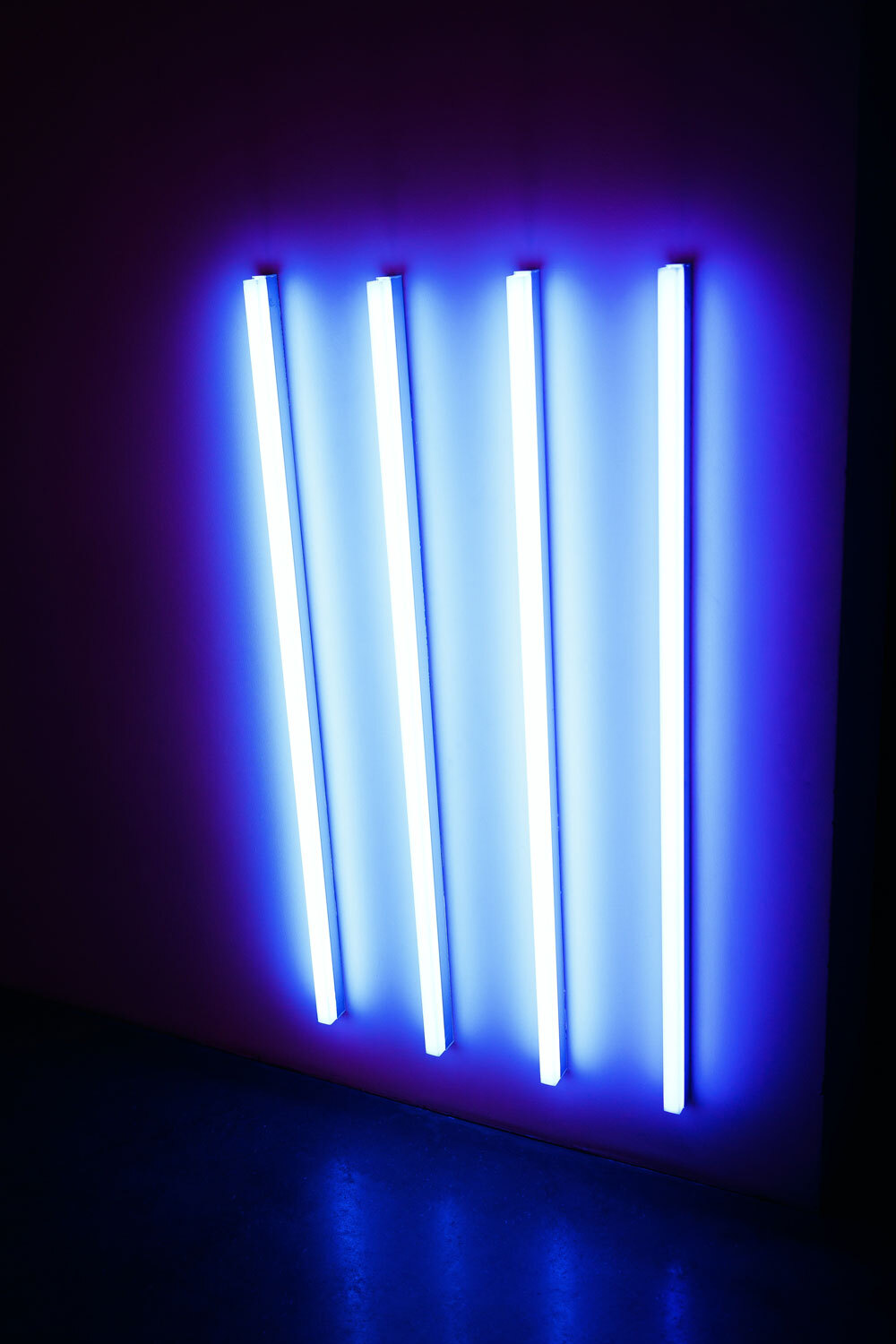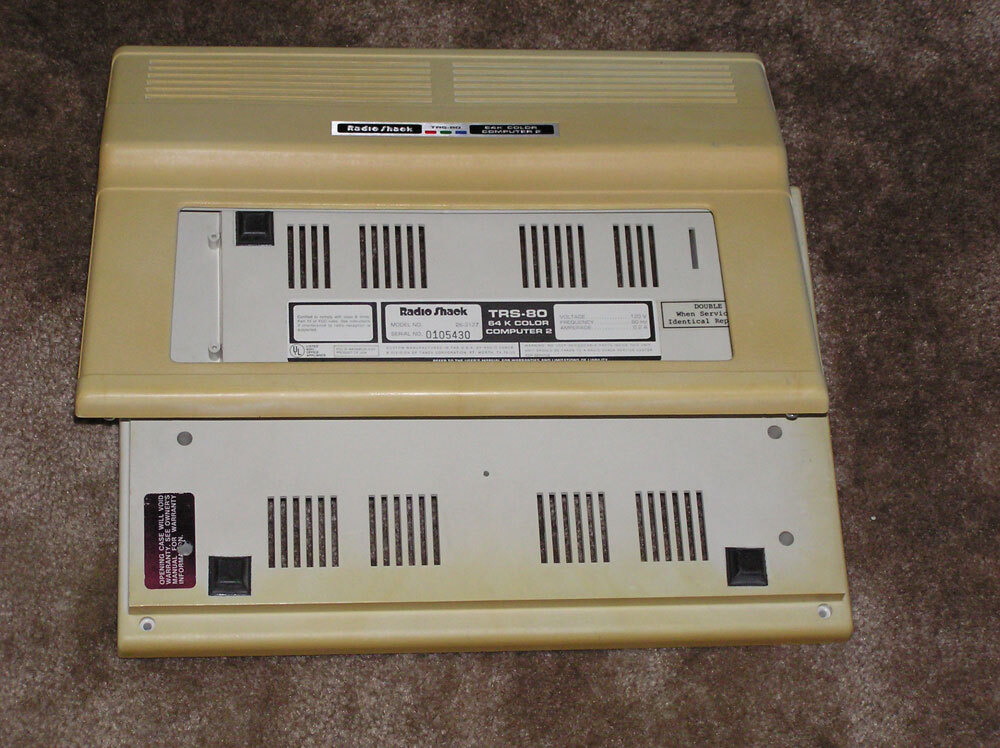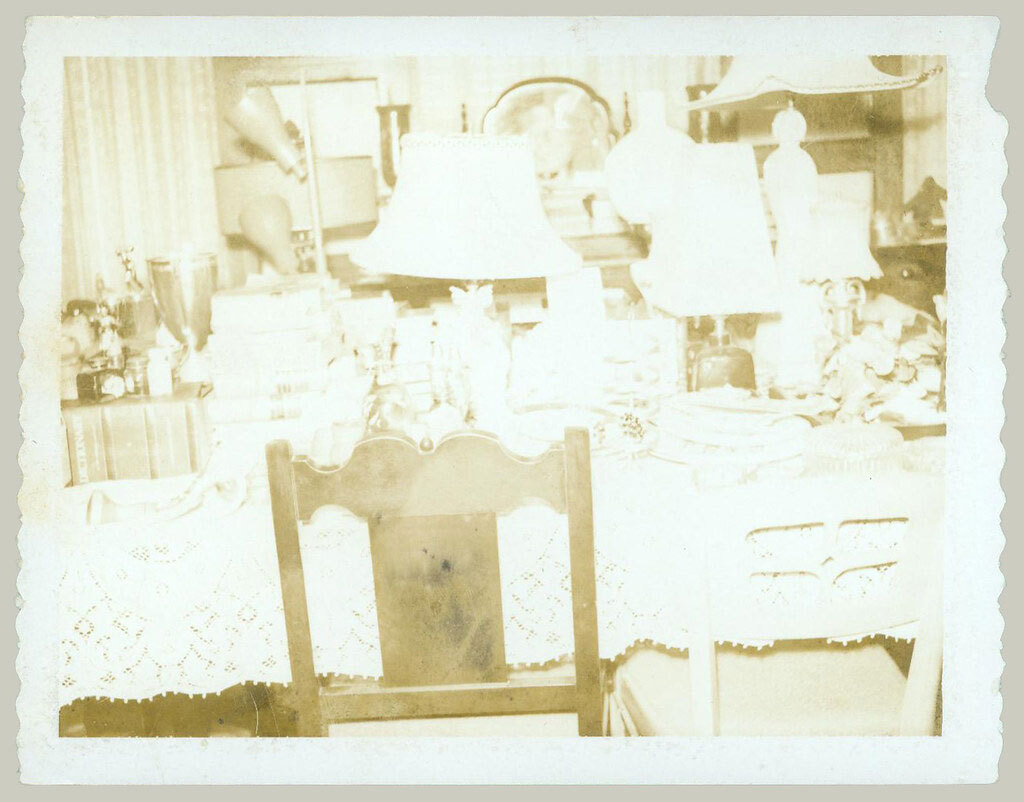Why Bodily Objects Degrade Over Time

At this time in Tedium: There’s this impact I usually confer with when speaking about digital images. Outdated images, for no matter purpose, are inclined to age themselves considerably over time, because the codecs mirror older processes for making footage, in addition to the final results of age. However digital images, whereas not practically as excessive a decision as a contemporary pro-quality digital camera can take, don’t age themselves fairly so shortly. So because of this, footage on Flickr which are practically 20 years outdated at this level usually handle to appear to be they have been, for all intents and functions, taken yesterday. As time goes on, the baseline for high quality improves. Similar with music: A pop tune from 1998 usually doesn’t draw an excessive amount of consideration to its age on trendy radio in comparison with a tune from 1988, partially as a result of digital recording codecs like ProTools had turn into widespread by that time. However decay is all the time across the nook, and in the present day’s Tedium talks all about the way in which issues fade. — Ernie @ Tedium
At this time’s GIF is from a video produced by the Getty Museum exhibiting the fragile nature of restoring outdated drawings.

Why newsprint adjustments coloration and even degrades over time
As a former newspaper man, I’ve quite a lot of outdated newspapers. They sit on a shelf and are helpful to take a look at, as they remind me of a previous life earlier than I frightened about issues like digital decay.
Some time again, I pulled a few of these outdated papers off the shelf, and to my shock, they have been extra yellowed than I keep in mind. At this level, most of my papers are greater than 15 years outdated, and never notably fresh-looking, despite the fact that the design fashion was pretty trendy in look.
Now, they weren’t completely screwed. Simply not precisely hot-off-the-presses, when you get my drift.
My resolution to stopping additional decay? I put them in a closet. No, this isn’t excellent. Nevertheless it seems that it’d truly be a greater strategy than what I used to be doing.
One problem of preserving newsprint is that newsprint is inherently low-quality materials. It’s low cost; it’s not designed to be archived. A lot of it finally ends up wrapping fish and filling shoeboxes.
And the fabric, within the grand scheme, is comparatively new. When Charles Fenerty, a Canadian inventor, observed that rag paper—literal paper from material—was dealing with shortages, he got here up with the concept of manufacturing paper from wooden pulp. Whereas his invention was groundbreaking, his enterprise expertise weren’t: It took him three years to publicize his invention to a close-by newspaper, the Acadian Recorder, and he never patented the creation, guaranteeing that it could turn into widespread, however he wouldn’t see a lot profit from it himself.
This invention of a wooden pulp materials for publishing was vital in that it helped minimize the prices of uncooked materials and ensured that there wouldn’t be fairly so many provide constraints. (After all, trendy newspapers seem allergic to newsprint.)
The issue, although, is that wooden is comprised of cellulose, which tends to greatest keep its power when the paper is manufactured from lengthy fibers, as the Library of Congress explains. Newsprint is produced by a technique of mechanical pulping, which is mainly the worst potential approach to produce paper in case your purpose is to maintain it round for lots of of years.
However cellulose basically has challenges as a preservation medium. Cellulose, the LOC notes, naturally produces acids over time which are inclined to degrade inside the paper over time. And even sturdy paper fibers are inclined to degrade over time.
Moreover, there’s a standard kind of polymer in woods known as lignin, which helps to create rigidity for the plant. This construction is vital to many varieties of heavy paper, as How Stuff Works notes, nevertheless it tends to be faraway from high-quality white paper, which is commonly bleached. Why is that? Straightforward: as a result of lignin encourages oxidation of the paper, which creates the yellowing impact.
So, whereas wooden pulp was revolutionary for publishing due to its potential to permit for quick manufacturing, it was not designed to final very lengthy in its pure type. Satirically, the fabric that wooden pulp changed, rags, truly holds up significantly better to the weather, in line with the LOC.
“Whereas fibers could shorten with age, rag papers have a tendency to stay sturdy and sturdy, particularly if they’ve been saved correctly in situations not overly heat or humid,” the web site explains.
So in a single sense, it’s unlucky that my newspapers weren’t printed on rags, as a result of they might be in higher situation for lots of of years to come back. However in one other, that low cost paper made the newspaper trade viable, which most likely allowed me to work within the newspaper trade for a variety of years. So I suppose we’ll name it even.
>50
The variety of years newsprint is anticipated to final, even beneath one of the best of situations, according to reporter Dana Aiken Tobey, who researched the problem for a narrative on defending historic newspapers that’s seen as an important information for preservationists.

The best enemy of bodily objects could also be ultraviolet gentle
However there’s one other downside we now have to debate with regards to yellowing and objects. And when you have adopted retro tech someday previously couple of a long time you would possibly know loads about this.
So, plastics specifically are inclined to naturally yellow over time, notably when totally uncovered to daylight. Daylight is, after all, brilliant and lightens up a room, nevertheless it additionally accommodates ultraviolet gentle, which is invisible however can injury objects over time. (It additionally negatively impacts pores and skin, and is a known cancer risk.)
This can be a downside for any objects that individuals look to protect, like outdated newspapers like I talked about above. The room the place the newspapers sat usually doesn’t have open drapes, partially as a result of I’m additionally utilizing a pc in there, however sufficient gentle does get in that it does doubtless permit some UV in. So because of this, it was getting impacted by UV rays, on high of all the opposite unhealthy stuff that impacts newsprint.
And simply since you hold outdated objects inside doesn’t imply they received’t keep away from the consequences of yellowing. Most sorts of sunshine bulbs bought through the interval of early retro computer systems emitted some form of ultraviolet gentle. The truth is, fluorescent gentle bulbs (together with of their compact variety) are inclined to emit quite a lot of it, requiring heavy phosphor coating, whereas incandescent bulbs have a tendency to provide gentle from a broad spectrum, together with ultraviolet rays.
The excellent news within the modern-day is that LED lighting, whereas additionally being extra vitality environment friendly, is a fairly pure gentle supply, which implies that it produces few rays of UV. And that has opened up quite a lot of new avenues for people who depend on having UV-free gentle sources, comparable to museums.
A 2015 Wired piece mentioned how the museum trade was transferring to LEDs after years of counting on incandescent lighting that had UV filters on it to assist take away such lighting. After all, LED lighting by itself has some adverse components, like blue light, and might really feel unnatural, however with the fitting use of phosphors, it may possibly get fairly near the true factor.
“The distinction isn’t perceptible,” Yale conservationist scientist Jens Stenger advised the outlet. “For those who don’t have a direct comparability, it’s laborious to acknowledge the distinction with the bare eye.”
Partly due to these lighting points, retro followers have taken to preventing decay with decay. Texas retro fan David Murray, higher generally known as The 8-Bit Man, and his brother, Mike, who runs The Geek Pub, are most likely the best-known experimenters with regards to retrobright (or “Retr0bright,” when you’re a hacker), with David specifically having developed a number of techniques, comparable to overlaying supplies with peroxide cream and submerging plastics in tubs of hydrogen peroxide on a scorching day. The mixture of hydrogen peroxide and UV gentle creates a chemical impact that may assist to quickly reverse or at the very least disguise the influence of the yellowing.

An instance of a pre-retrobrighted pc case. (Wikimedia Commons)
An academic-style paper on retrobright [PDF] written by Saltypretzel and published on Hackaday again in 2021, explains why the method is critical, and why UV gentle truly takes issues considerably additional. (Saltypretzel, delivery identify Caden Xu, truly conferred with knowledgeable polymer chemist to clarify the impact.)
The lengthy and in need of it’s {that a} widespread course of for producing injection-molded plastic of the sort utilized in retro computer systems, acrylonitrile-butadiene-styrene, creates materials that doesn’t react effectively to UV gentle. However the retrobrighting doesn’t actually cease the method, a lot as take it additional, to cover its influence.

The identical case as above, after a retrobright therapy. (Wikimedia Commons)
“Opposite to fashionable perception, the Retr0bright course of doesn’t truly repair the plastic; it simply bleaches the plastic,” Saltypretzel wrote.
Which is why the percentages are good that, except you retain your retro computer systems in a room brightened by solely LED gentle, with no influence from the solar or different UV gentle sources, you’re doubtless going to need to retrobright the gadget once more in a couple of years.
On the plus facet, at the very least we now have an understanding of UV gentle’s position within the degradation of objects so we now have that possibility!
1942
The 12 months Kodak first launched its coupler-incorporated chromogenic print process, a key course of for printing coloration images in a mass-produced paper format. This course of, over time, has improved, creating picture prints that maintain up higher and higher with age. This course of, in line with researcher Ann Fenech (who wrote a doctoral thesis on this matter in 2011), is chargeable for 99 p.c of all coloration prints produced in the present day.

The photographic print’s lengthy fade … actually
So, yet one more level of debate on degradation right here, and it’s the one I discussed on the high of the piece. We will usually inform the age of a photographic print based mostly on the kind of fabric the {photograph} is on (normal print, Polaroid), the way in which it was shot, in addition to any indicators of age or graininess. Generally, the images will even be conveniently timestamped.
Now, indicators of degradation are nothing new. An 1891 piece in The Photographic Times highlighted how issues about photographic degradation have been so extreme that it was the subject of a Photographic Society of London assembly in 1855, which led to a paper that mentioned the influence of the poor cleansing of a major growth agent of photographic movie, hyposulphite of soda (often known as sodium thiosulfate).
This assembly led to a set of suggestions to discourage the degradation of images, which I’ll recreate right here:
That the best care ought to be bestowed upon the washing of prints after using hyposulphite of soda, and for this objective scorching water may be very significantly better than chilly.
Nearly all of the Committee assume that gold, in some type, ought to be used within the preparation of images, though each number of tint could also be obtained with out it.
That images be saved dry.
That trials be made of drugs prone to defend the prints from air and moisture, comparable to caoutchouc, gutta percha, wax, and the completely different varnishes.
After all, different points are components in picture decay within the modern-day, as photo-development expertise has advanced. Kodak Digitizing notes that the aforementioned daylight is a significant component behind picture degradation, nevertheless it’s not the one one.
One other issue, which you may need guessed from the very fact it got here up after we mentioned newsprint, is contact with acid—notably, as creator Christian Roemer notes, in tape type.
“The adhesive that makes tape sticky can even seep into the images and trigger the colour molecules to get all screwy,” Roemer writes. “That’s why it’s greatest, once you’re hanging or framing images, to not use any acidic paper or tape to mount them.”
It’s not the one downside, nonetheless. One widespread situation that may trigger issues for images is one thing known as “foxing,” wherein stains seem on outdated images over time. These are often the results of mildew or mildew that influence the {photograph}, creating deterioration of the floor on which the {photograph} is mounted.
The Australian New South Wales Authorities’s workplace of State Archives and Data has an in-depth guide about foxing and the challenges it creates from an archival perspective. Merely put, fixing foxing isn’t simple:
“Foxing” may be very tough to take away. Some spots might be decreased by the aqueous therapy of the doc or {photograph}, nonetheless these remedies do pose a danger to the merchandise and should be undertaken in a managed atmosphere by specialist conservators. Some folks advocate using peroxide or daylight bleaching to scale back or take away foxing spots in paper paperwork—nonetheless bleaching is a dangerous therapy for many objects to bear and there may be proof that the spots should not eliminated completely—returning after a variety of years.

A scan of a classic ebook with indicators of “foxing.” (by way of TexturePalace)
Foxing isn’t distinctive to images—it may possibly additionally have an effect on paper, and it’s the common impact that provides outdated paper its look of age. In some ways, it’s to paper what corruption is to an outdated laborious drive. However in some methods, foxing truly finally ends up being considerably fascinating as a approach to make one thing “really feel” outdated. As a graphic designer, I’d usually faux foxing results on the backgrounds of pages I did as a result of it kind of gave it a stage of authenticity you can’t actually get from a purely digital object. You form of simply faux it.
It’s bizarre that, to make issues look outdated and light within the digital period, we mainly need to Photoshop it, proper?
After all, whereas digital objects are naturally protected to some extent from this sort of bodily deterioration by the truth that the objects are saved as ones and zeros on a pc, it doesn’t essentially imply that digital knowledge is residence free.
As I wrote a couple of years again, disc rot, the impact that oxidation can have on optical discs like compact discs and laserdiscs, is changing into a severe concern for a lot of collectors of outdated media. And codecs like laborious drives and floppy drives don’t precisely deal with age all that effectively, with mechanical components breaking down over time.
Even strong state drives, the gold normal by which a lot knowledge is saved by common folks these days, tends to wear down over time, making it unhealthy for long-term storage.
I suppose one factor we now have to stay up for is 5D optical storage, a not too long ago introduced type of glass-etched storage with knowledge density 10,000 occasions that of your common Blu-ray disc. It might retailer as much as 500 terabytes of information on a disc with the scale of a typical Blu-ray, which at Apple costs would most likely price about $100,000. Certain, it solely information at 230 kilobytes per second, which isn’t at the same time as quick as a 2X CD-ROM burner from the mid-’90s (and mainly ensures an extended siesta as you attempt to save all 500 terabytes to a disc you’ll be able to’t even erase), however hey, in case your purpose is to have your knowledge outlive you by many 1000’s of years, it’s worthwhile to get inventive about the way you handle the decay.
And there’s one other manner to consider this as effectively: A lot of what’s at the moment digital doubtless will be unable to get any higher over time, as it is going to be restricted by the utmost capabilities of what was obtainable on the time. Images produced on a digital digital camera from 1996 will solely be nearly as good as 1996 requirements, whereas movie from the identical interval can nonetheless profit from improvements which have come since by way of analog-to-digital conversion. (Lengthy story brief: Our scanners are higher now than they have been 25 years in the past.)
This similar philosophy is why albums recorded in analog codecs might be remastered repeatedly and it nonetheless brings out new touches to the music a long time later. There are exceptions to this, as anybody who has performed an upscaled Nintendo 64 sport on an emulator can let you know, however info in lots of circumstances can solely stay as much as the capabilities of the fabric that’s getting used.
Within the digital period, the chance isn’t issues wanting “outdated” a lot as issues disappearing completely. UV gentle and foxing received’t be the issue, a lot as servers that all of a sudden disappear from the face of the web.
—
Discover this one an fascinating learn? Share it with a pal! And see you once more subsequent week!


